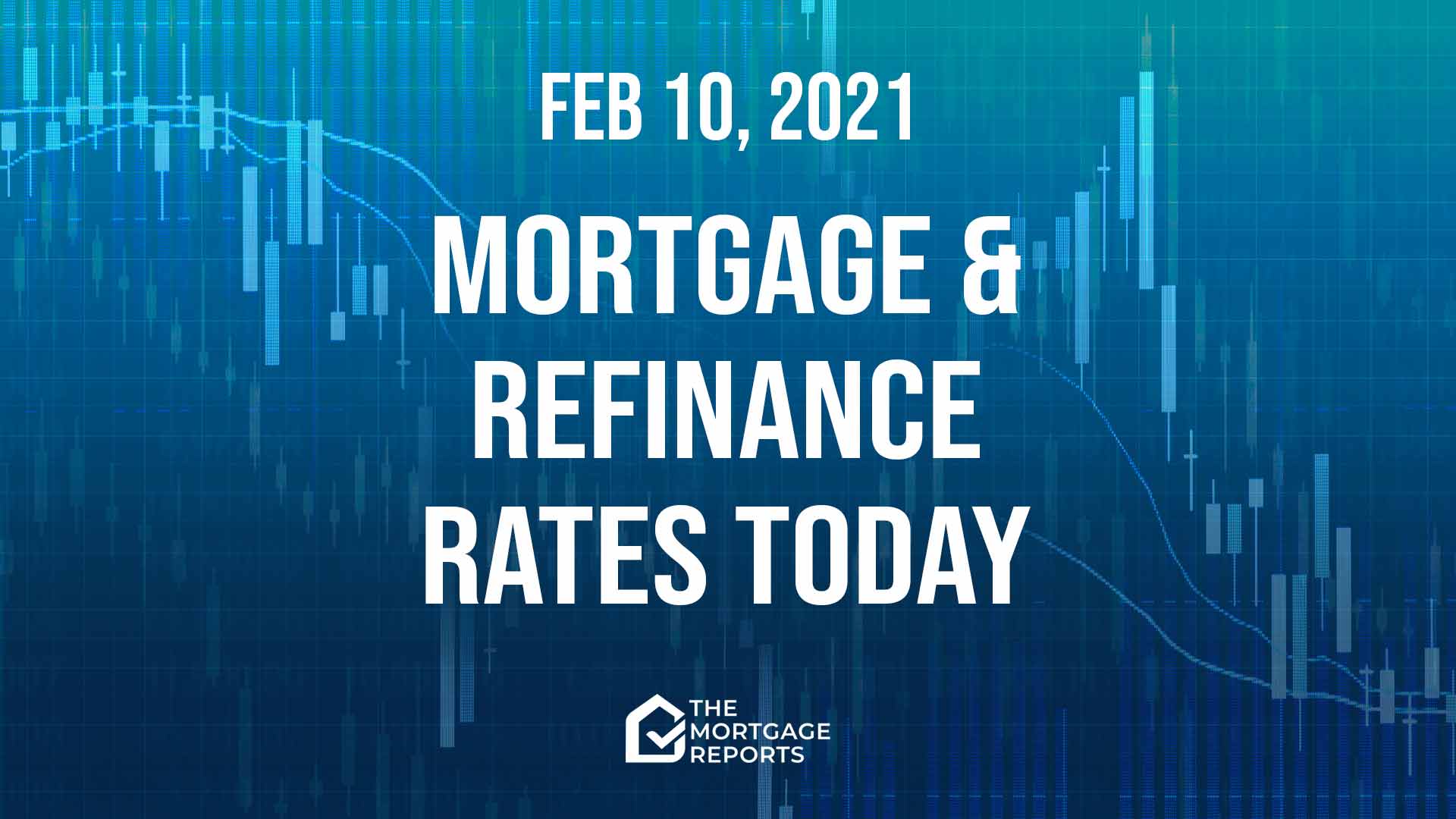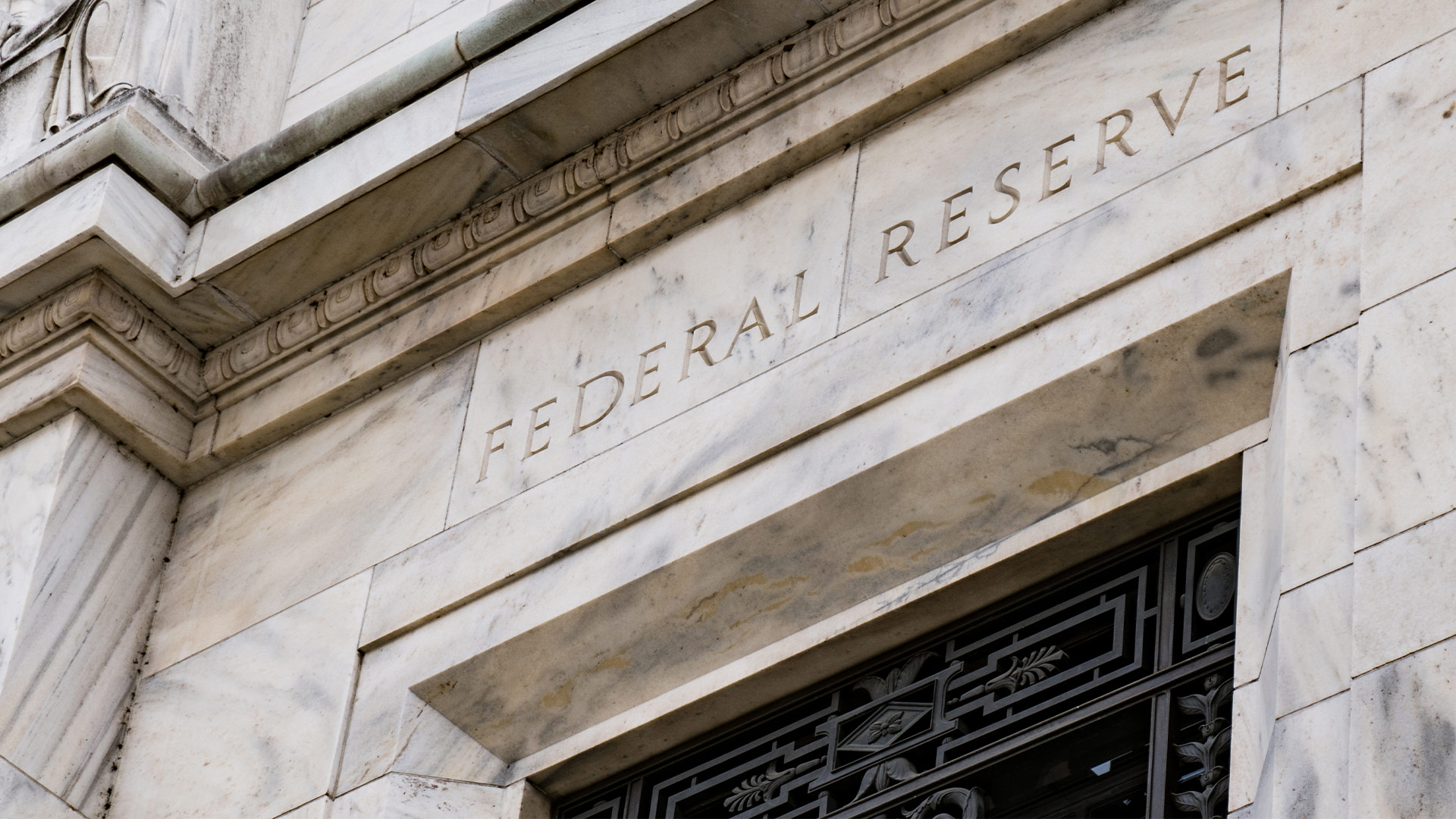
Today’s mortgage and refinance rates
Average mortgage rates edged lower yesterday. It was only the second fall in nine working days, though they held steady on Monday. Luckily, all recent movements have been small. So these rates remain extraordinarily low.
Once again, it’s looking as if mortgage rates may be unchanged or barely changed today. This morning’s inflation figures were subdued and very close to expectations.
Find and lock a low rate (Feb 10th, 2021)Current mortgage and refinance rates
| Program | Mortgage Rate | APR* | Change |
|---|---|---|---|
| Conventional 30 year fixed | |||
| Conventional 30 year fixed | 2.8% | 2.8% | Unchanged |
| Conventional 15 year fixed | |||
| Conventional 15 year fixed | 2.362% | 2.362% | Unchanged |
| Conventional 5 year ARM | |||
| Conventional 5 year ARM | 3% | 2.743% | Unchanged |
| 30 year fixed FHA | |||
| 30 year fixed FHA | 2.438% | 3.415% | -0.06% |
| 15 year fixed FHA | |||
| 15 year fixed FHA | 2.313% | 3.253% | -0.06% |
| 5 year ARM FHA | |||
| 5 year ARM FHA | 2.5% | 3.201% | Unchanged |
| 30 year fixed VA | |||
| 30 year fixed VA | 2.308% | 2.479% | -0.01% |
| 15 year fixed VA | |||
| 15 year fixed VA | 2.063% | 2.382% | Unchanged |
| 5 year ARM VA | |||
| 5 year ARM VA | 2.5% | 2.379% | Unchanged |
| Rates are provided by our partner network, and may not reflect the market. Your rate might be different. Click here for a personalized rate quote. See our rate assumptions here. | |||
COVID-19 mortgage updates: Mortgage lenders are changing rates and rules due to COVID-19. To see the latest on how coronavirus could impact your home loan, click here.
Should you lock a mortgage rate today?
I see little reason to think mortgage rates are likely to rise or fall far anytime soon. They’ve been within a narrow range for some time and it’s hard to identify reasons why they should suddenly leave it.
Naturally, that’s not a promise. There’s always a risk of markets suddenly taking off. But that may be a smaller one now than it sometimes is.
Maybe I err too far on the side of caution. But my instinct in such circumstances is to lock — on the grounds that the gains from floating are likely to be minimal. So my personal rate lock recommendations are:
- LOCK if closing in 7 days
- LOCK if closing in 15 days
- LOCK if closing in 30 days
- FLOAT if closing in 45 days
- FLOAT if closing in 60 days
But, with so much uncertainty at the moment, your instincts could easily turn out to be as good as mine — or better. So be guided by your gut and your personal tolerance for risk.
Compare top lenders
Refine results by loan type:
Market data affecting today’s mortgage rates
Here’s a snapshot of the state of play this morning at about 9:50 a.m. (ET). The data, compared with about the same time yesterday morning, were:
- The yield on 10-year Treasurys held steady at 1.14%. (Neutral for mortgage rates) More than any other market, mortgage rates normally tend to follow these particular Treasury bond yields, though less so recently
- Major stock indexes were higher on opening. (Bad for mortgage rates.) When investors are buying shares they’re often selling bonds, which pushes prices of those down and increases yields and mortgage rates. The opposite happens when indexes are lower
- Oil prices rose to $58.47 from $57.29 a barrel. (Bad for mortgage rates* because energy prices play a large role in creating inflation and also point to future economic activity.)
- Gold prices edged up to $1,848 from $1,834 an ounce. (Neutral for mortgage rates*.) In general, it’s better for rates when gold rises, and worse when gold falls. Gold tends to rise when investors worry about the economy. And worried investors tend to push rates lower
- CNN Business Fear & Greed index — Increased to 67 from 62 out of 100. (Bad for mortgage rates.) “Greedy” investors push bond prices down (and interest rates up) as they leave the bond market and move into stocks, while “fearful” investors do the opposite. So lower readings are better than higher ones
Caveats about markets and rates
Before the pandemic and the Federal Reserve’s interventions in the mortgage market, you could look at the above figures and make a pretty good guess about what would happen to mortgage rates that day. But that’s no longer the case. The Fed is now a huge player and some days can overwhelm investor sentiment.
So use markets only as a rough guide. Because they have to be exceptionally strong (rates are likely to rise) or weak (they could fall) to rely on them. But, with that caveat, so far mortgage rates today look likely to hardly move if they do so at all.
Find and lock a low rate (Feb 10th, 2021)
Important notes on today’s mortgage rates
Here are some things you need to know:
- The Fed’s ongoing interventions in the mortgage market (way over $1 trillion) should put continuing downward pressure on these rates. But it can’t work miracles all the time. And read “For once, the Fed DOES affect mortgage rates. Here’s why” if you want to understand this aspect of what’s happening
- Typically, mortgage rates go up when the economy’s doing well and down when it’s in trouble. But there are exceptions. Read How mortgage rates are determined and why you should care
- Only “top-tier” borrowers (with stellar credit scores, big down payments and very healthy finances) get the ultralow mortgage rates you’ll see advertised
- Lenders vary. Yours may or may not follow the crowd when it comes to daily rate movements — though they all usually follow the wider trend over time
- When rate changes are small, some lenders will adjust closing costs and leave their rate cards the same
- Refinance rates are typically close to those for purchases. But some types of refinances are higher following a regulatory change
So there’s a lot going on here. And nobody can claim to know with certainty what’s going to happen to mortgage rates in coming hours, days, weeks or months.
Are mortgage and refinance rates rising or falling?
Today and soon
I’m expecting mortgage rates to hold steady or thereabouts today. But, as always, that could change as the day progresses.
Overnight, global management consultancy McKinsey & Company wrote in a newsletter:
The US is looking to transition to normalcy — probably starting in the second quarter of 2021, with herd immunity likely to be achieved in the third or fourth quarter. Strong public-health measures will remain critical to saving lives during this period.
McKinsey & Company, “On Point” newsletter, Feb. 10, 2021
Of course, McKinsey acknowledges risk factors that could change that prediction. But it seems a sensible scenario at the moment. And, as long as it holds good, such a positive prospect should put upward pressure on mortgage rates over coming weeks and months.
And it joins other influences that are also often associated with higher mortgage rates, including higher government spending and borrowing.
Of course, the economy is still suffering and its recovery is painfully slow. So periods when these rates dip lower are to be expected. But we may be seeing a divergence from the recent path that saw ever-cheaper mortgages. Just don’t expect to see rapid changes — at least for now.
For more background on my wider thinking, read our latest weekend edition, which is published every Saturday soon after 10 a.m. (ET).
Recently
Over the last several months, the overall trend for mortgage rates has clearly been downward. And a new, weekly all-time low was set on 16 occasions last year, according to Freddie Mac.
The most recent such weekly record occurred on Jan. 7, when it stood at 2.65% for 30-year fixed-rate mortgages. But rates then rose, though only modestly. And in Freddie’s Feb. 4 report, that weekly average was 2.73%.
Expert mortgage rate forecasts
Looking further ahead, Fannie Mae, Freddie Mac and the Mortgage Bankers Association (MBA) each has a team of economists dedicated to monitoring and forecasting what will happen to the economy, the housing sector and mortgage rates.
And here are their current rates forecasts for each quarter of 2021 (Q1/21, Q2/21, Q3/21 and Q4/21).
The numbers in the table below are for 30-year, fixed-rate mortgages. And they were all published between Jan. 14 and 20:
| Forecaster | Q1/21 | Q2/21 | Q3/21 | Q4/21 |
| Fannie Mae | 2.7% | 2.7% | 2.8% | 2.8% |
| Freddie Mac | 2.9% | 2.9% | 3.0% | 3.0% |
| MBA | 2.9% | 3.1% | 3.3% | 3.4% |
But, given so many unknowables, the current crop of forecasts may be even more speculative than usual. And there’s certainly a widening spread as the year progresses.
Find your lowest rate today
Some lenders have been spooked by the pandemic. And they’re restricting their offerings to just the most vanilla-flavored mortgages and refinances.
But others remain brave. And you can still probably find the cash-out refinance, investment mortgage or jumbo loan you want. You just have to shop around more widely.
But, of course, you should be comparison shopping widely, no matter what sort of mortgage you want. As federal regulator the Consumer Financial Protection Bureau says:
Verify your new rate (Feb 10th, 2021)Shopping around for your mortgage has the potential to lead to real savings. It may not sound like much, but saving even a quarter of a point in interest on your mortgage saves you thousands of dollars over the life of your loan.
Compare top lenders
Refine results by loan type:



